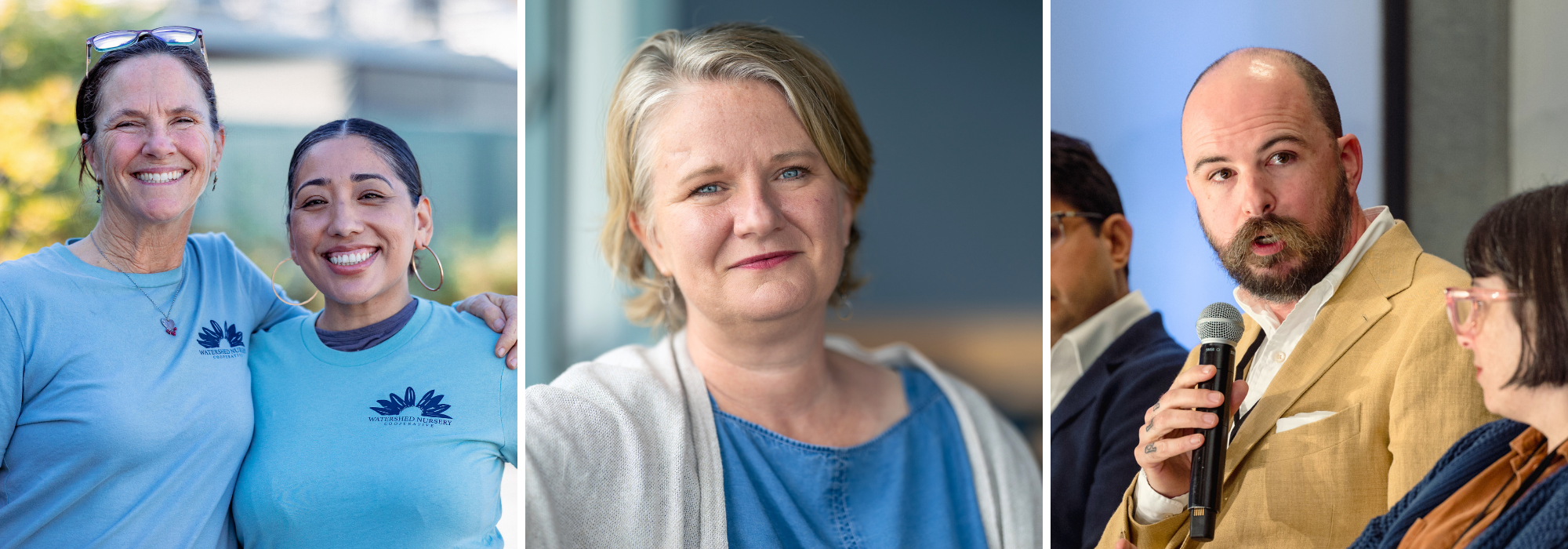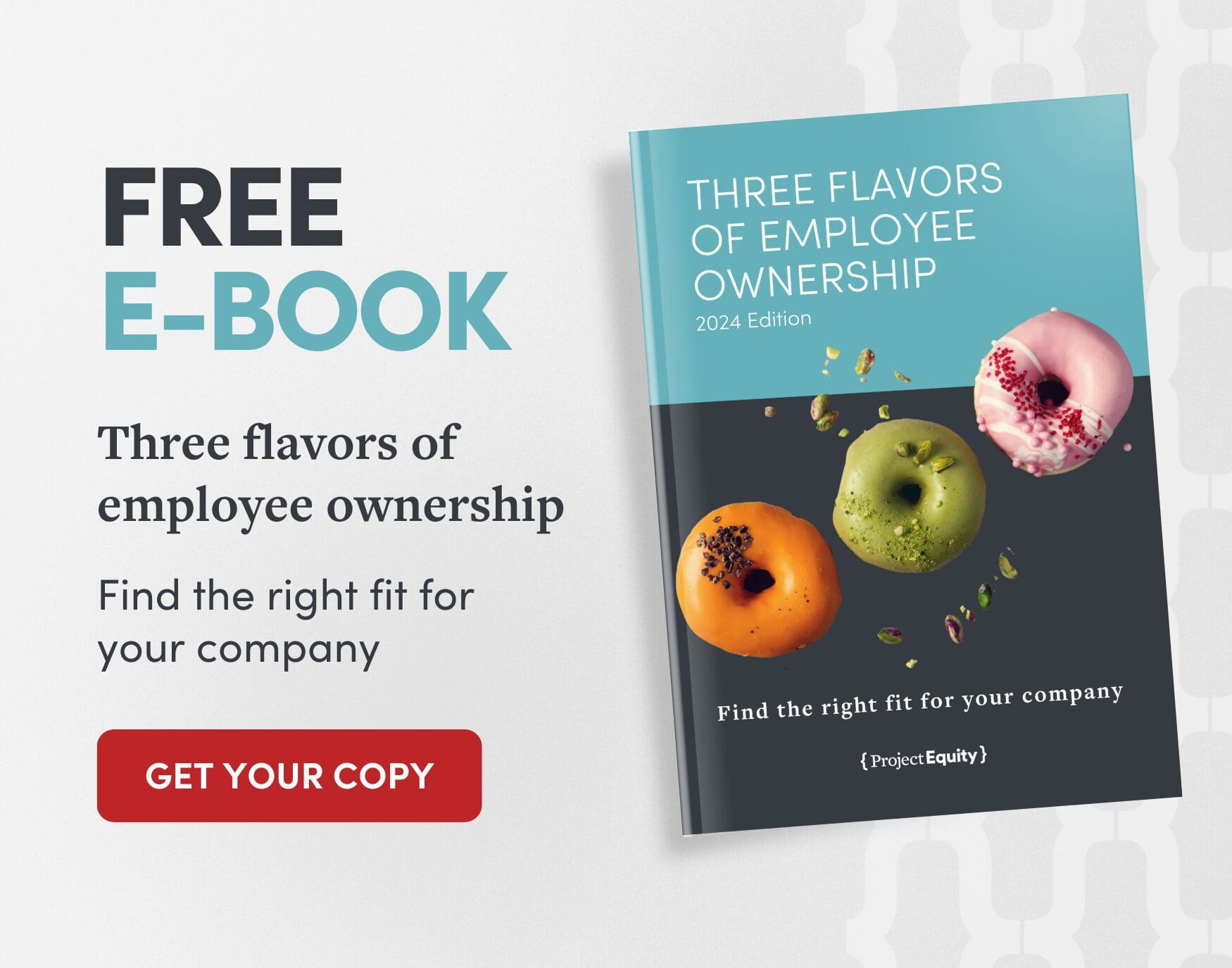Savvy sellers: Meet three business owners who are winning with employee ownership
- Genevieve Adams
When it comes time to sell your business, the process can feel overwhelming.
Laura Anderson, Jesse Thorn and Diana Benner were facing this same challenge. Now, their legacies are secure and their employees are stepping into their new roles as owners.
These inspiring business owners took the leap to have their companies become employee-owned. They describe what the transition to employee ownership means to them and how it has empowered their employees while making sure the legacy of their companies continues for years to come.
1. Laura Anderson, Local Ocean Seafoods
Laura worked with Project Equity on a feasibility study for Local Ocean Seafoods, an 18-year-legacy business in Newport, Oregon, and received a loan from our Employee Ownership Catalyst Fund to transition into an Employee Ownership Trust (EOT).
Why employee ownership?
When Laura started looking to exit the business, she didn’t consider selling it to strangers. Instead, she sold it to the employees with employee ownership.
“I was interested in employee ownership from day one,” Laura said. “Ownership was a real motivator and driver for high performance in individuals and feelings of satisfaction and connectivity, and I wanted to be in and work in that kind of a place.
“Local Ocean has developed into a real legacy business for this community in Newport,” she continued, “and I think one of my other motivations for going into employee ownership rather than just selling outright was just the assurance that way that Local Ocean operates, mostly buying direct local fish from fisherman, supporting our fishing communities, supporting the ocean and taking care of our people, that that stays true in perpetuity.”
What happened next?
Laura contacted Project Equity. “We ran a very robust feasibility study,” she explained. “We looked at a worker cooperative model, Employee Ownership Trusts, and ESOP models and did all of the financial analysis to see if we were a good candidate–and as I expected, we were an excellent candidate.”
How does she feel about the transition?
“I can honestly say I’ve never looked back and said, ‘Was that the right decision?’ or ‘Was that the right thing to do?’ There’s no question in my mind that this was the right thing not only for me personally, but for the company, the employee, the community, the fishers, all of the stakeholders that rely on this business. No regrets, at all,” she said.
Watch this short video to learn more about Local Ocean and their transition experience.
2. Jesse Thorn, Maximum Fun
With support from Project Equity, the podcasting company Maximum Fun became a worker cooperative, also known as a coop. Jesse stayed on as a host and is a worker-owner.
Why employee ownership?
“I believe in sustainable enterprise. I also believe in collective enterprise. And so I had gotten offers to sell the company over the years, but I knew that even in the best-case scenarios, people that I cared about would lose their jobs,” Jesse said.
“I called my father-in-law, who worked until very recently at an employee-owned hardware store in the Bay area,” he explained. “And I said, ‘Steve, is there a way out of this? Do I have to have meetings with investment bankers?’ And he said, ‘Find somebody who can help you look into employee ownership.’ And that’s when I found Project Equity.”
What happened next?
Project Equity’s client services team carried out a feasibility study, assessing the possible management transition, evaluating the estimated sale value and gauging employee interest. Project Equity then assisted Maximum Fun in forming a transition team and finalizing the sale. Today, Maximum Fun operates as a worker-owned cooperative and is participating in the final stage of Project Equity’s support—the Thrive Program—through which we support the ongoing education and development of the team needed for a strong ownership culture.
How does he feel about the transition?
“Because I felt like it was my legacy, it’s the thing I spent the last 25 years of my life doing, I felt really good about sharing it with these people I love and care about and value and trust,” Jesse said. “I’m sharing something with everyone and we’re all truly working together… we’re all making the choices together. This system both allows the business structure to reflect our values and also allows us to build something that is values-driven that is sustainable in the long term that otherwise may not be possible.”
Check out Maximum Fun’s ownership story to learn more.
3. Diana Benner, the Watershed Nursery
The Watershed Nursery transitioned into a coop, and Diana stayed on after the transition, retaining an operational role but shifting control to the Board of Directors and management team.
Why employee ownership?
“In the early days, we talked about the importance and the priority to us of taking care of the people on our team as well as the plants and the environment,” Diana explained. That’s why she and co-founder Laura Hanson determined that a worker coop would align most with their mission when they pursued succession options.
What happened next?
After multiple discussions with Project Equity, we conducted a formal feasibility study and determined that the Watershed Nursery would be a good fit for a cooperative model. We engaged the employees and found that they were interested in ownership. Then, we initiated the transition process.
At the end of the day, the employees were signing on to take ownership of the business. From the initial conversations about becoming a cooperative to the details of what it means to be a worker-owner, comprehension was critical. Given the team had several Spanish-speaking employees, all materials and all conversations were translated so that everyone could fully participate. They went beyond basic translation services to ensure clear and inclusive communication. Funding for bilingual services came from Project Equity’s Employee Ownership Catalyst Fund, which also helped finance the sale. This support included bilingual materials, simultaneous interpretation during meetings and translated key documents.
“What we do here is very much a team effort, and there’s no way we could do what we do without every member of the team contributing their part that they do,” Diana said. “A lot of our members speak Spanish as their first language. They’ve been instrumental in developing our systems and our methods and our approach to producing healthy plants. We wouldn’t have made it here without all the people who have been involved. And so we wanted all of everybody who’s part of that team to be able to be equally involved in the process of transitioning and becoming owners of what they help make.”
How does she feel about the transition?
“I love the collaborative process. I love the input from having many heads and hearts involved in the decision-making process and just being able to get to the tweak of a new perspective on a problem, new insight, something that you’ve been looking at for years and you can’t get outside of it,” Diana stated. “I appreciate having that teamwork and partnership and navigating all of that. So far, it’s feeling great.”
Read the Watershed Nursery’s ownership story to learn more.
To hear from more owners about why they transitioned and how it’s benefited their companies, check out the rest of our ownership stories!
About the author
Genevieve has built her career around providing marketing direction, print and web materials and blog content for small and medium-sized businesses, including her own. She joined the Marketing Team after contracting with Project Equity for two years. At Project Equity, she helps increase awareness of employee ownership through local and national outreach. Genevieve is passionate about equality in all forms and is honored to use her creativity and knowledge to advance employee ownership.



